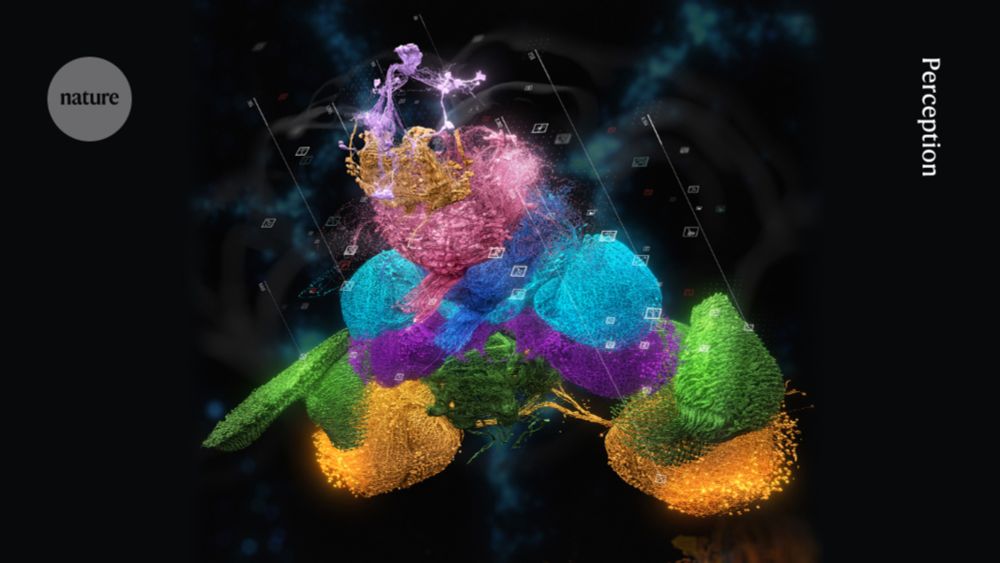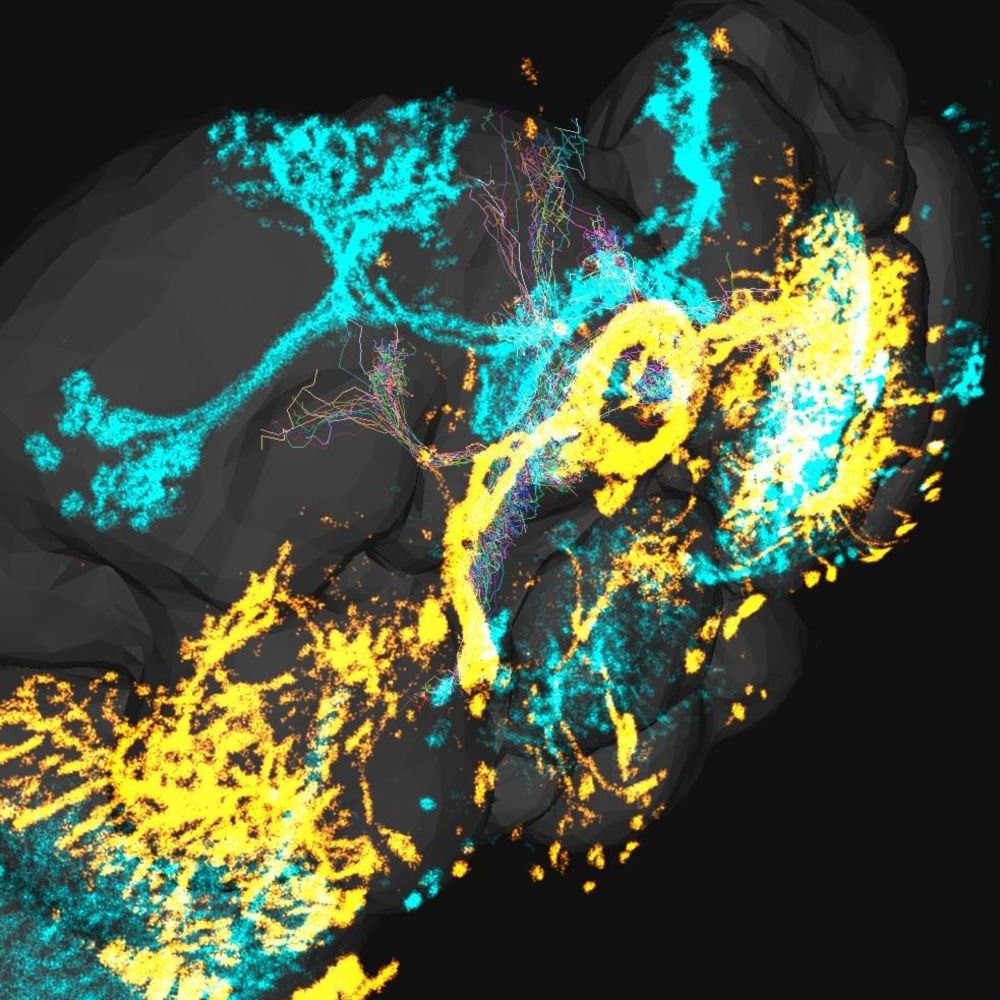The dataset includes ~160,000 cells, segmented nuclei and mitochondria, synapses and neurotransmitter predictions, and annotations linking the CNS to peripheral sensory, motor, and visceral systems.
Info: banc.community
Data: codex.flywire.ai?dataset=banc
Viewer: ng.banc.community/view
03.08.2025 15:16 — 👍 6 🔁 3 💬 1 📌 0
It’s a big project and I’m taking a short holiday now after the preprint! So I’ll make another post later showing all the bits of it, and how we did this as a community !
02.08.2025 14:47 — 👍 8 🔁 0 💬 0 📌 0
Flywire collaborators @princetonneuro.bsky.social were essential in building the connectome, and theory collaborators in interpreting it! @jdrugowitsch.bsky.social Art by @amysterling.bsky.social!
02.08.2025 14:34 — 👍 4 🔁 0 💬 1 📌 0
A massive community effort, centred on @harvardmed.bsky.social
@princetonneuro.bsky.social. EM data from @darbly.bsky.social lab, collected by @jasper-tms.bsky.social
@mindyisminsu.bsky.social.
02.08.2025 14:33 — 👍 5 🔁 2 💬 1 📌 0
Public access to the first fly connectome that spans the whole CNS - BANC!: codex.flywire.ai?dataset=banc
Different from prior connectomes - it is brain + cord (think spinal cord)
We use it to ‘embody’ the system and find it resembles ‘subsumption architecture’ doi.org/10.1101/2025...
02.08.2025 14:30 — 👍 52 🔁 23 💬 2 📌 2

a man with a mustache in a blue suit says tiny celebration in front of a group of people
ALT: a man with a mustache in a blue suit says tiny celebration in front of a group of people
Happy Friday! The female adult fly brain-and-nerve-cord (BANC) connectome is now LIVE!
Explore the data here: codex.flywire.ai?dataset=banc
Check out the preprint here: doi.org/10.1101/2025...
01.08.2025 22:22 — 👍 40 🔁 17 💬 2 📌 2
The first full central nervous system connectome dataset of an adult fly, with the most comprehensive annotation of sensory and motor neurons to date.
A heroic effort with contributions from many groups, a product of the collaborative spirit of the Drosophila neuroscience community.
01.08.2025 23:14 — 👍 39 🔁 11 💬 0 📌 0
What's in a QuAC? | Funke Lab
The Funke lab at HHMI Janelia.
If you want a narrative version of this project, check out our blog post on the newly re-minted Funke Lab website!
funkelab.github.io/blog/2024/qu...
Thanks to @bobqubit.bsky.social, @asbates.bsky.social, and @jefferis.bsky.social, & @janfunkey.bsky.social for this 🦆ing awesome collaboration!
6/6
15.01.2025 20:31 — 👍 6 🔁 1 💬 0 📌 1
With so many new in blue, I thought I would repost this thread about our neurotransmitter prediction across the entire fly brain connectome! Should prove a very useful hypothesis generator for the insect neuroscience community.
21.11.2024 16:22 — 👍 5 🔁 0 💬 0 📌 0
In a fly's brain, there are some 140,000 neurons that connect via 54.5 million synapses. Researchers have now mapped *all of them*. That story and more of the best in Science and science in this edition of #ScienceAdviser: www.science.org/content/arti... 🧪 🧠
03.10.2024 21:16 — 👍 1016 🔁 152 💬 28 📌 30
Dataset imaging by @dddavi.bsky.social, Zhihao Zheng, image segmentation by Seung group at Princeton, human proofreading an international collaboration, cell typing and meta data building housed mainly at the the University of Cambridge, Dept. Zoology.
03.10.2024 00:30 — 👍 0 🔁 0 💬 0 📌 0
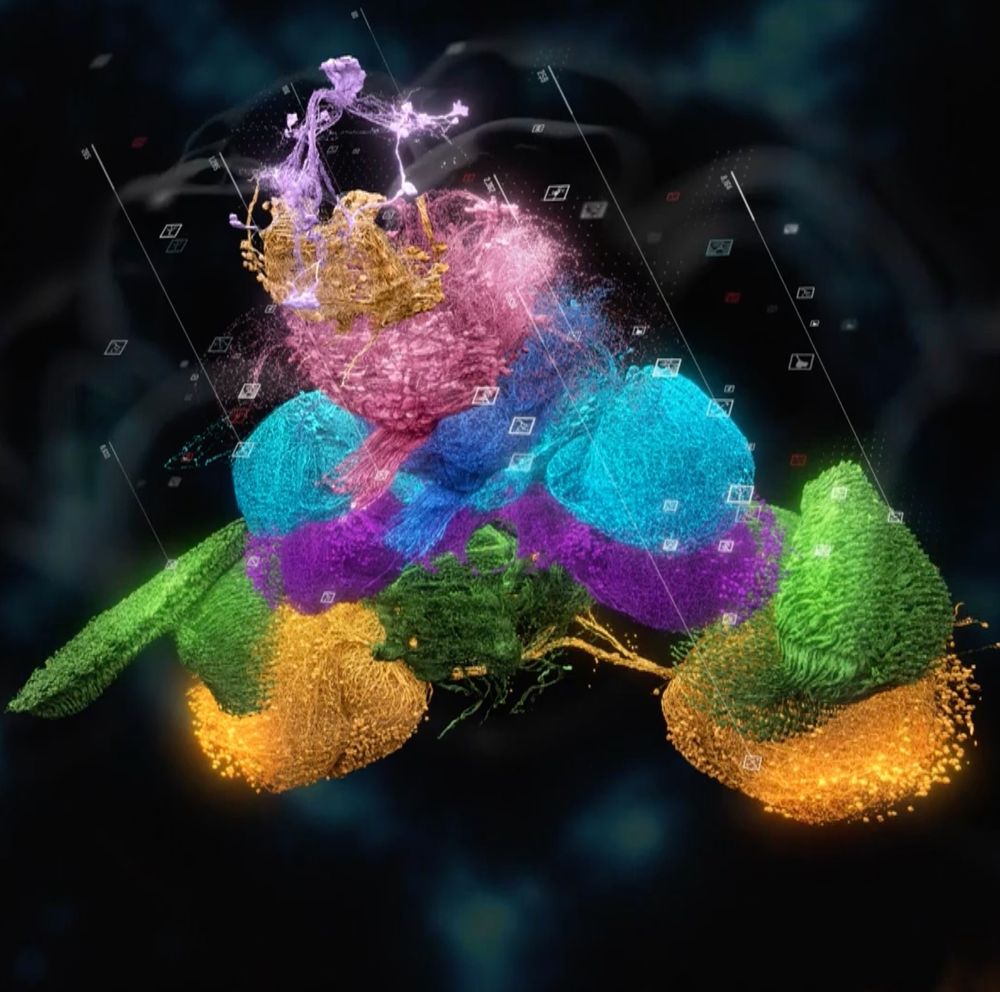
Our fly brain connectome papers are now live (www.nature.com/immersive/d4...), and is getting traction (www.bbc.co.uk/news/article...). With ~139k neurons, >8k cell types, synapses annotated, transmitters predicted, ~134 evo-devo units denoted, so much is now possible in the fly.
03.10.2024 00:26 — 👍 11 🔁 5 💬 1 📌 1
Lastly we are interested in cases where our predictions fail and unpublished data linking transmitters, neuropeptides, gap-junctions, post-synaptic receptors, co-transmisison combinations to EM. Please get in touch (Alexander_Bates[at]hms.harvard.edu) with any insights.
19.05.2024 02:23 — 👍 1 🔁 0 💬 0 📌 0
Thank you Lou Scheffer, Clare Pilgrim, @vincentcroset.bsky.social and our reviewers at Cell for helpful discussions. And importantly, our funders, NIH BRAIN Initiative, Wellcome Trust, EMBO, MRC LMB, HHMI Janelia @hhmi.bsky.social.
19.05.2024 02:23 — 👍 2 🔁 0 💬 1 📌 0
Nils Eckstein, Andrew Champion, Michelle Du and Jan Funke for the ML, biology w/ Yijie Yin, Philipp Schlegel, Kathi Eichler, @martamcosta2, @gsxej, Volker Hartenstein, data w/ Sven Dorkenwald, Arie Matsilah, Claire McKellar, Amy Sterling, Mala Murthy, Sebastian Seung, the Janelia Annotation Team.
19.05.2024 02:22 — 👍 1 🔁 0 💬 1 📌 0
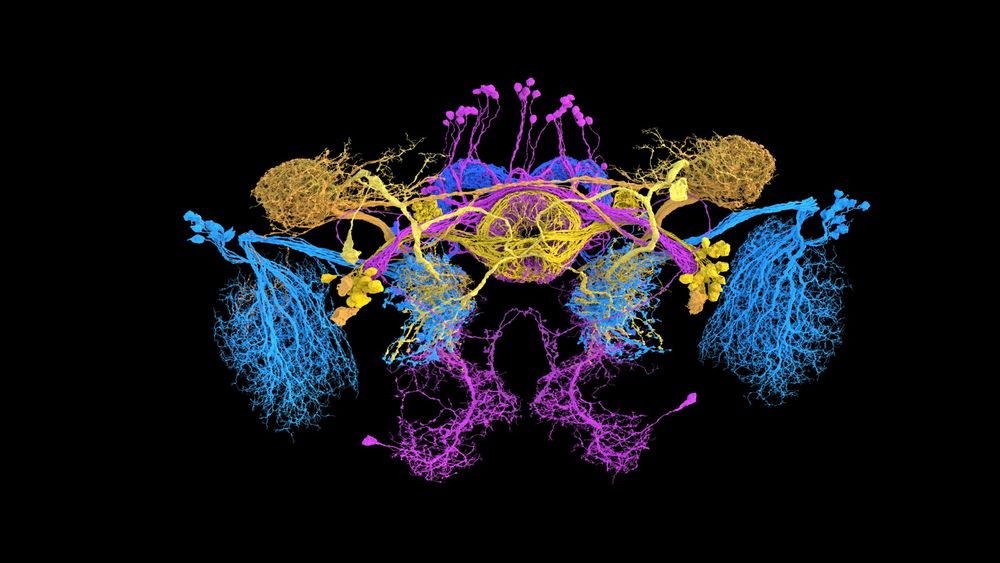
We hope these results will act as an accelerant for connectome-driven/informed hypotheses and neuroscientific investigation. We made these results available to the community as early as we could (#biorxiv @biorxiv-neursci.bsky.social in 2020). Our predictions have been used in >12 studies since.
19.05.2024 02:22 — 👍 1 🔁 0 💬 1 📌 0
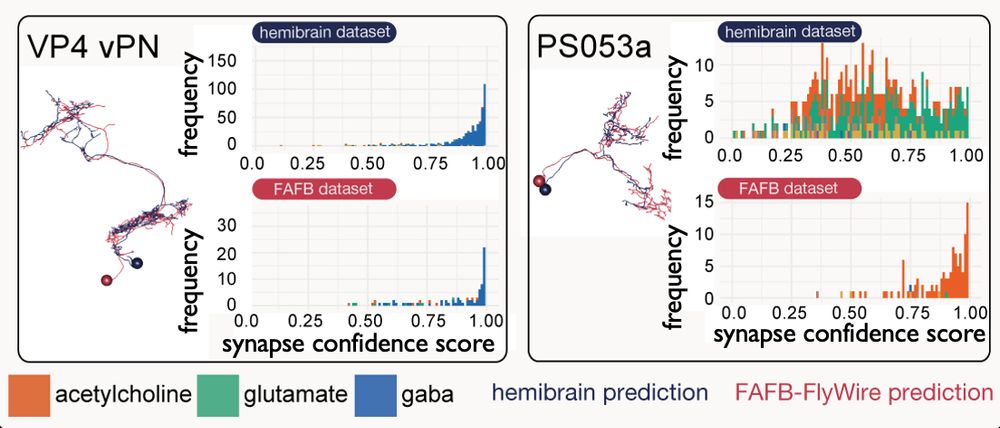
But we feel our work is a big step forward. Our data (zenodo.org/records/1059...) and code (github.com/funkelab/syn...) are available. Results also available through Codex (codex.flywire.ai, FlyWire team) and we hope to see them in neuPrint (Janelia Fly EM) and on VirtualFlyBrain.org.
19.05.2024 02:21 — 👍 1 🔁 0 💬 1 📌 0
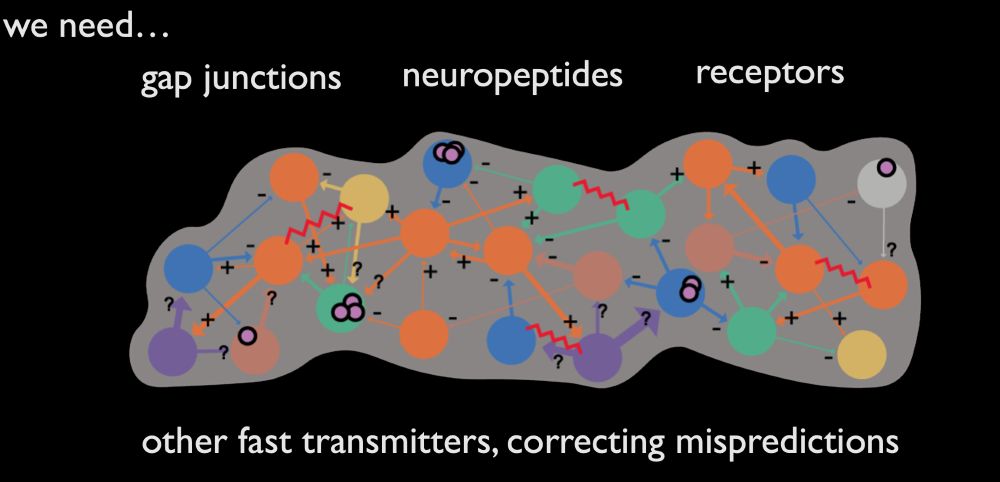
Not quite mission complete. We want more annotations. E.g. receptor localisation delineates excitatory from inhibitory glut connections, moving our +/ - labels to individual connections. Their annotation could enable ML to extract this molecular information from EM at scale.
19.05.2024 02:21 — 👍 1 🔁 0 💬 1 📌 0

Which proxy for synaptic signs!... With major assumptions, e.g. no co-transmission, and that glutamate is inhibitory - but, it seems ~80% of brain neurons may express both excitatory and inhibitory GluRs, and co-transmission esp. in monoaminergic neurons is reasonably common.
19.05.2024 02:20 — 👍 1 🔁 0 💬 1 📌 0
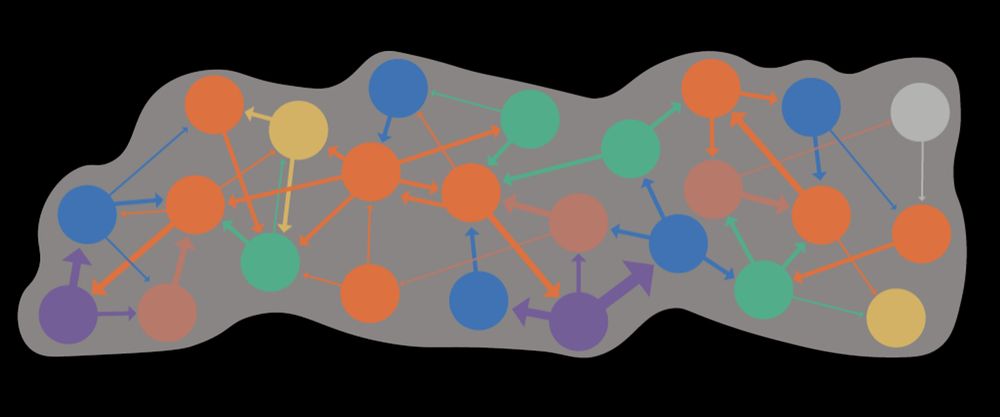
Which means, we had now ‘coloured in’ the connectome with transmitter labels…
19.05.2024 02:20 — 👍 1 🔁 0 💬 1 📌 0
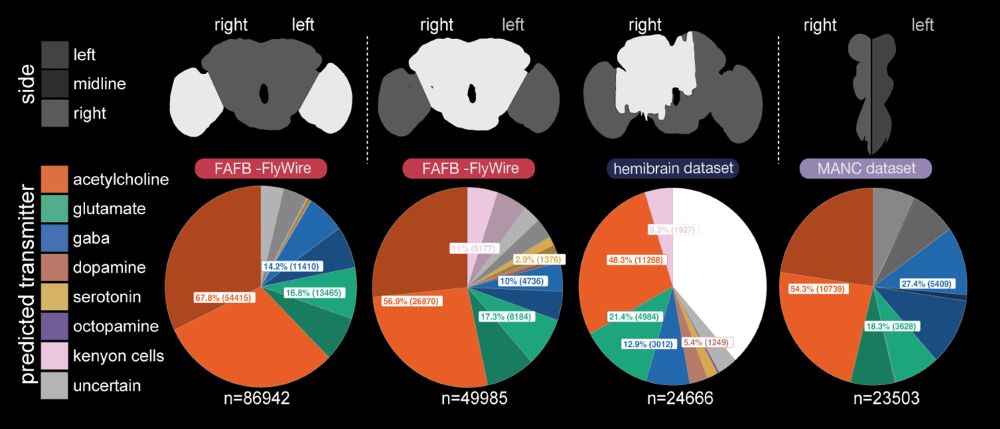
Yet overall, we had predictions which we felt were pretty good, across several data sets that together make up a whole (amalgam) Drosophila melanogaster nervous system! The neurotransmitter proportions turned out similar to those suggested by single-cell RNA-seq studies.
19.05.2024 02:19 — 👍 1 🔁 0 💬 1 📌 0
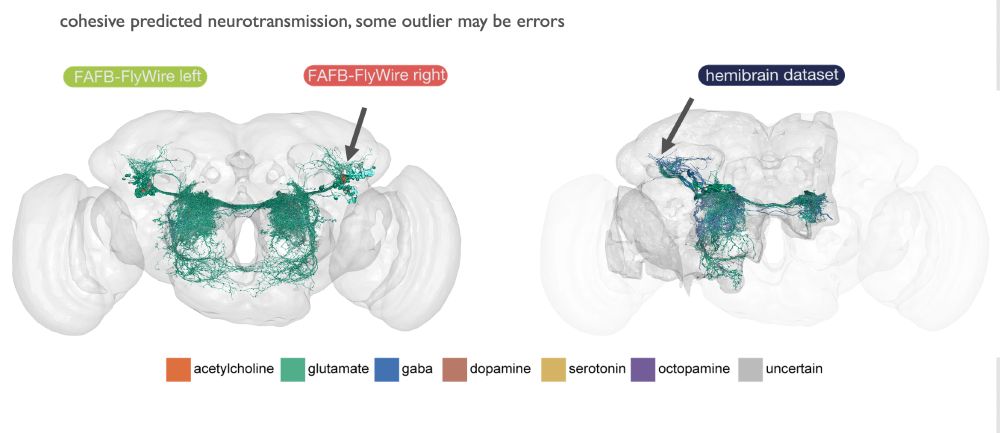
In other cases, we see inconsistent results that look like genuine mispredictions, maybe <10% of our total neuronal predictions. The most obvious Kenyon cells, incorrectly predicted dopaminergic, rather than cholinergic. Our serotonin predictions are the least reliable.
19.05.2024 02:19 — 👍 1 🔁 0 💬 1 📌 0
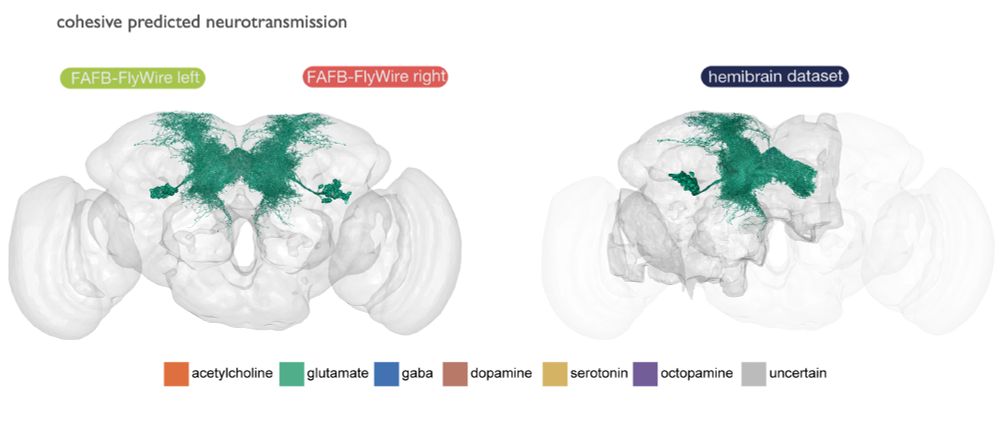
Here, for example, all members of a hemilineages are predicted glutamatergic (these are all tangential cells of the fan-shaped body).
19.05.2024 02:18 — 👍 1 🔁 0 💬 1 📌 0
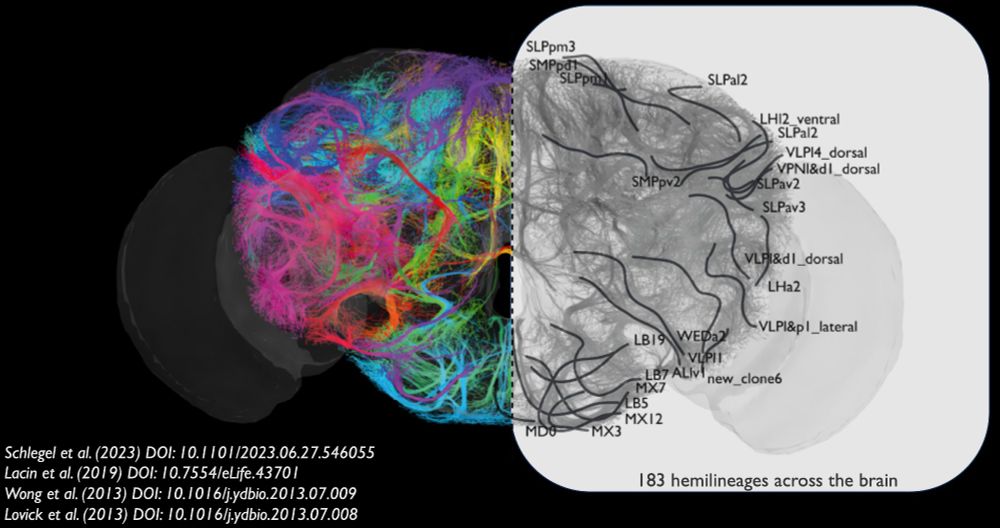
We also noticed higher-level principles. Lacin et al. (2019) had previously shown that neurons that are born together (in a ‘hemilineage’, ~100-200 neurons) express the same fast-acting transmitter in the ventral nerve cord. We found this held true in the ~183 brain hemilineages as well!
19.05.2024 02:18 — 👍 1 🔁 0 💬 1 📌 0
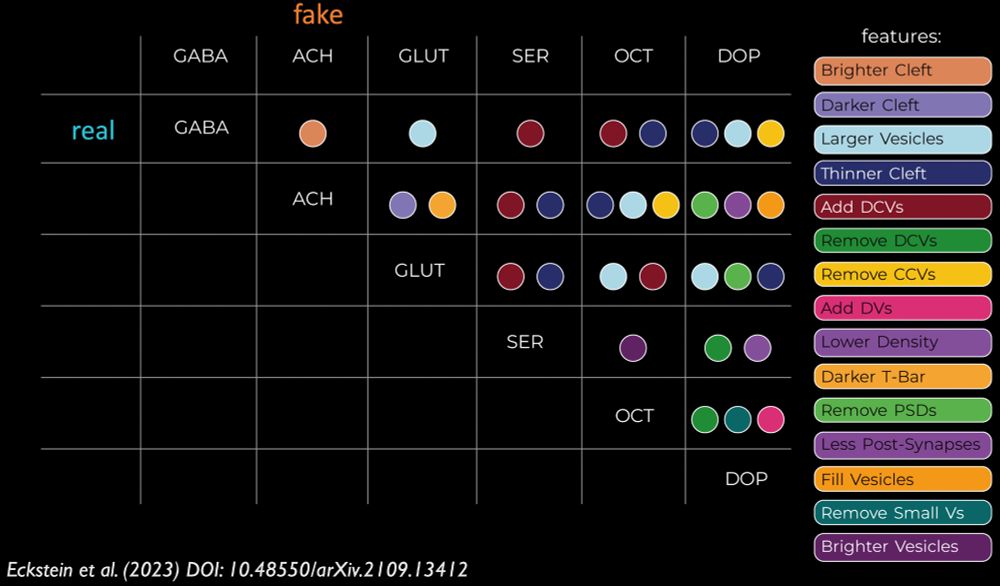
Now humans (i.e. Alicia Kun-Yang Lu, Thomson Rhymer, Samantha Finley-May, Tyler Paterson) could look at the images and work out what had been added to cause a ‘misprediction’. This matrix shows the features that will convert a real synapse (rows) into a different prediction by Synister (columns).
19.05.2024 02:17 — 👍 1 🔁 0 💬 1 📌 0
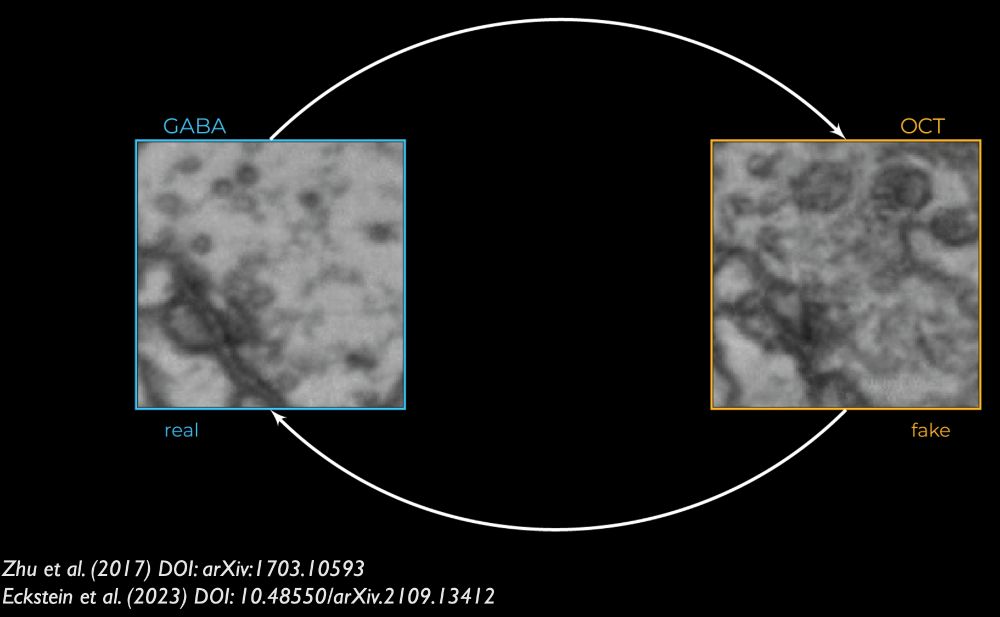
But how could it tell from a single synapse, what transmitter was present? Nils and Jan developed an explainable AI method (openreview.net/forum?id=Cn-...) to permute images of real synapses into counterfactuals that fool Synister, e.g. below, adding dark vesicle-like things throws prediction.
19.05.2024 02:17 — 👍 1 🔁 0 💬 1 📌 0
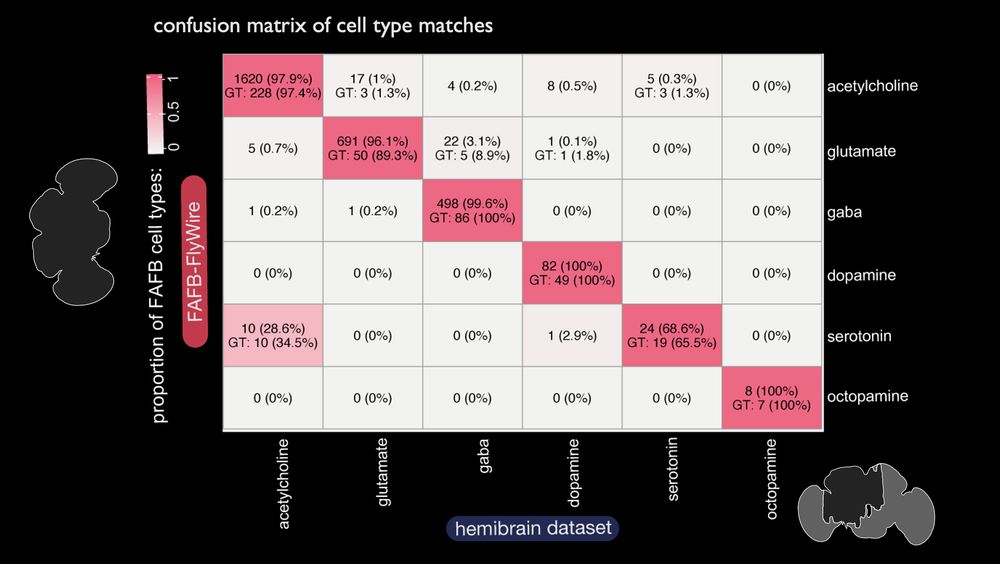
We also found that matched across datasets neurons get the same predictions, suggesting our predictions are varying with real biology, and are robust to inter-dataset or biological neuron origin differences.
19.05.2024 02:16 — 👍 1 🔁 0 💬 1 📌 0
Crowdsourcing Neuroscience at Princeton University. amyneurons on twitter
Computational neuroscience postdoc in the Milstein Lab at Rutgers University, studying synaptic plasticity, bio-plausible deep learning / neuroAI, neuromorphic computing. Previously @ Francis Crick Institute & UCL
Computational Neuroscientist | postdoct/ previous PhD @schaferlab in the MRC LMB and the Systems Neuroscience lab at Cambridge University ⛵️ 🎻🎨
Postdoc, John Tuthill lab.
Ph.D., John Carlson lab.
Undergraduate, Yulong Li lab.
Princeton University Press is proud to publish books that spark engaging discussions and present bold ideas from leading experts worldwide.
Machine Learning Researcher 🖥🔬🧫 🦆 @ Funke Lab, #HHMIJanelia
Views my own.
@NIGMS K99 & Helen Hay Whitney Postdoctoral Fellow @RockefellerUniv/ PhD @Columbia Genetics/ evolution of genes, circuits, and behavior/ he/him
Shanahan Fellow @Allen @UW and Researcher @Google
CATMAID, Science, Research Software, OpenSource, GIS, Forestry, timberNet, kazmos GmbH
PhD student in evolutionary genetics. University of Lausanne
Biodiversity scientist trying to understand where biodiversity comes from and where it’s going. Views my own
Profil officiel de l'Université de Lausanne (Suisse)🇨🇭. "Le savoir vivant". Sept facultés. 17'000 étudiantes et étudiants. 15 programmes de bachelor, 42 programmes de master
Ant biologist, trait biogeographer based at Cardiff Uni. ⛰️🐜🔬
www.BishopTraitsLab.com
macroecology, distribution predictions, microclimates, invasion ecology, and climate tolerances of species 🐜🐌🦜🐝🪸
📍Lausanne-London. Postdoc @UCL
Ant biologist & naturalist. Post-doc at the Rockefeller University and junior fellow of the Simon's Society of Fellows
Postdoc in New York. Evolution of behavior, neural circuits, chemical senses, and speciation. he/him.
Incoming PI at the Max Planck Institute for Brain Research. (Fall 2025)
https://evolvingors.wordpress.com/
Assistant Professor at Emory studying neural circuits and behavior in flies (she/her). Views are my own. https://devinenilab.org/
VFB makes exploring Drosophila neuroanatomy easy: Find brain regions, neurons, transgenes, connectomes, scRNAseq, phenotypes & papers in a few simple clicks.
Join us on GitHub to help
https://github.com/VirtualFlyBrain/VFB2
https://virtualflybrain.org
biophysicist & neuroscientist • CPBF Fellow, Murthy Lab @Princeton • Physics PhD, Samuel Lab @Harvard '21 • Physics & ISC @Princeton '15
https://www.albert-lin.com/





